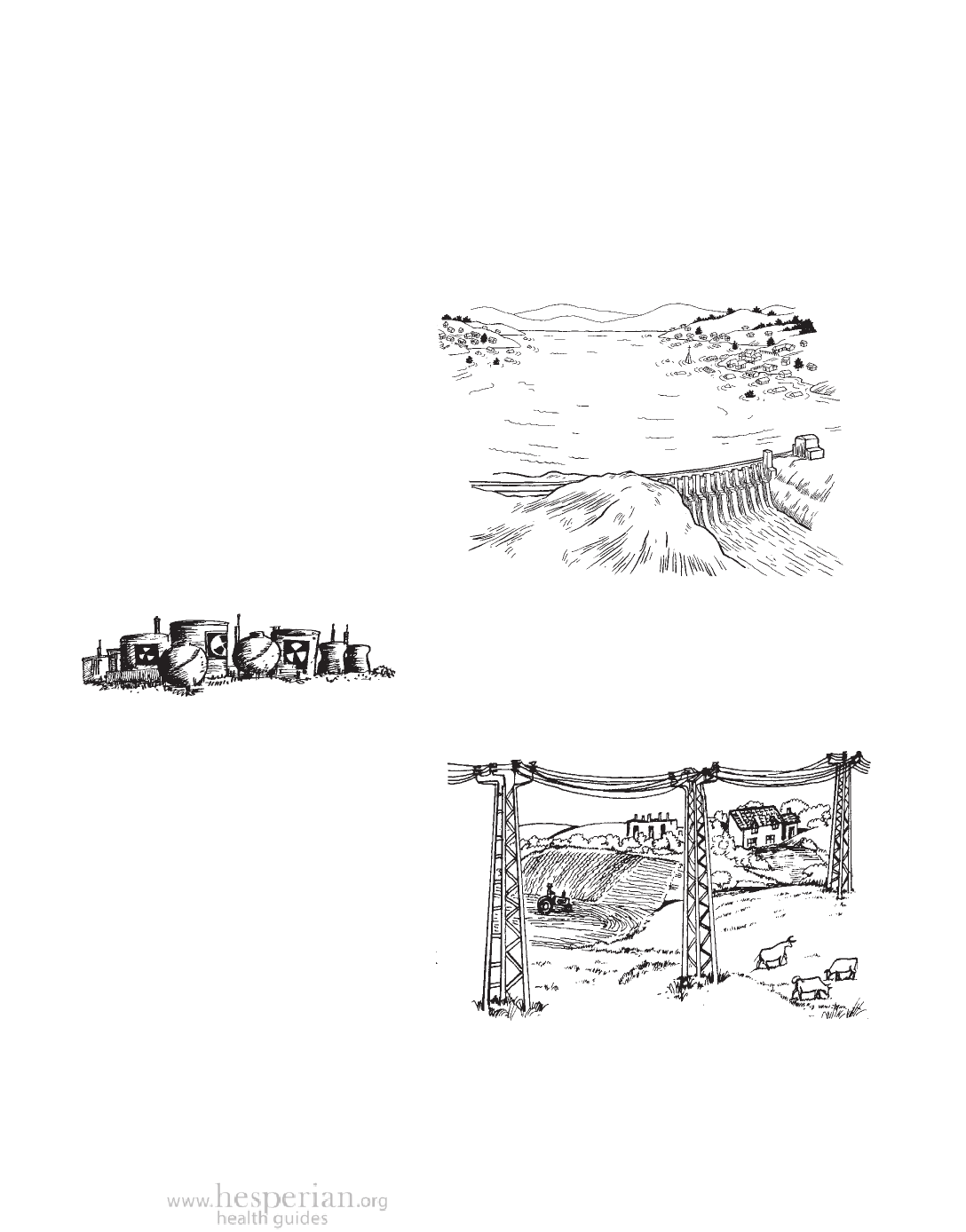
how electricity is produced 527
Health problems from nonrenewable energy
Burning fossil fuels in large power plants is the way most electricity is made.
Digging up and burning fossil fuels pollutes air, soil, and water, leading to
respiratory and skin problems. It also produces toxic chemicals that cause
cancer and birth defects (see Chapter 16, and page 506). Our use of fossil fuels
leads to global warming, and to wars for control of oil resources.
Big hydroelectric energy
(using water from large dams
to make electricity) leads to
people being forced to leave
their homes, go hungry, and
lose valuable land, and causes
an increase in diseases such as
malaria and schistosomiasis
(see Chapter 9). Small dams
have many fewer problems.
Nuclear energy is very dangerous because of the
toxic materials it uses (see page 491), the threat of
accidents, and the harmful waste it leaves behind,
causing health problems for many generations.
Nuclear energy is not clean energy.
High voltage wires (the
cables that carry electricity
from where it is made to where
it is used) can cause health
problems such as cancer
of the blood (leukemia) and
other cancers. It is best not
to build homes very close to
high voltage wires, especially
directly beneath them.
High voltage wires are
just as dangerous when used
with clean energy as with
fossil fuels. Making energy locally, which is an important part of clean energy,
reduces the need for high-voltage wires.
A Community Guide to Environmental Health 2012